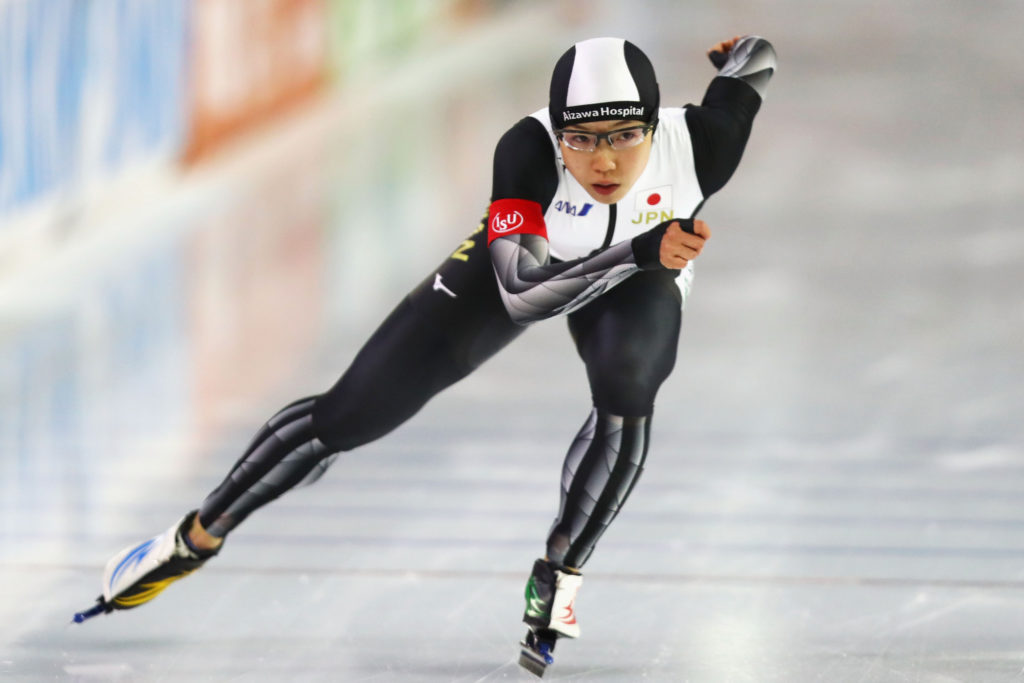Frontal Plane Muscles and Mechanics
Most people think about frontal plane training in terms of their arms and legs moving relative to the rest of their body—think of the seated inner/outer thigh machines you see at the gym.
But these contrivances don’t represent how your body actually moves. In real life, frontal plane movement occurs when we’re upright, moving and shifting our body through space with one or both feet on the ground—often culminating with your body aligned over one side.
So the base position of the frontal plane is as follows:
- Nose stacked directly over the sternum.
- Sternum stacked over the hip.
- Hip aligned over the knee.
- Knee right above the big toe.
- Weight centered on midfoot.
The hip on your stance leg should be higher than your non-stance leg, like a seesaw tilted up on one side. As a corollary, your abdominal wall on the stance side should be vertically shorter, from hip to armpit, relative to the other side—your abs attach to your rib cage and pelvis, thus linking your two “cores” together.

Finally, in the sagittal plane—front to back—the stance leg hip should be shifted back compared to the non-stance leg. An easy way to check for hip position is by looking down at your knees. The stance leg knee should be closer to your body than the other knee.
How to Train the Frontal Plane
Virtually every exercise you do in the gym has an eccentric—lengthening—and a concentric—shortening—component. The same applies with frontal plane activities, but there’s an increased emphasis on the eccentric control compared to other planes.
To borrow a phrase from Physical Therapist Gary Gray, you have to be able to load to explode. In the frontal plane, loading means adduction—this is as true for walking and running as it is for change of direction—and exploding means abduction.
The problem is that most people struggle more with the load part—holding the femur secure in the socket—than with the explode part—stretch and subsequent recoil of the abductors.
Here are five exercises that will help you improve your position, unlock range of motion and build strength, power, and control in the frontal plane.
Copenhagen Side Plank
Although the majority of frontal plane exercises should happen from a standing position, it’s helpful to start in a position in which you can easily find and feel the right muscles working before getting to your feet.
The Copenhagen Side Plank is that entry point, working the adductors concentrically, along with the contralateral ab wall. Some people call this chain of muscle the lateral sling.
Frontal Plane Split Squat
This is a sagittal plane exercise with a frontal plane twist. Set up like a traditional split squat, then pull, or shift, the hip of your forward leg backward—you should see your knee come back toward your hip. From the perspective of the back leg: imagine connecting the front of your hip on the rear leg side, to the inner thigh of the forward leg and holding it there throughout.
Don’t let your forward knee roll outward when you do this. You should feel your inner thigh, outer hip, hamstring, and ab wall on the front leg side as you move.
Offset Adductor Deadlift
This is basically a frontal plane deadlift that I picked-up from Dr. Pat Davidson. Start with one foot slightly in front of the other, and the back foot slightly elevated on a plate to push the hip higher. Shift your body weight toward your back leg and turn your hips in the same direction.
With one dumbbell, reach down and across toward the back foot with the goal of centering your body over the back foot. The forward foot should have very little weight on it.
Lateral Lunge with Val Slide
This uses a traditional side lunge position, with a specific emphasis on stacking the body over one foot. The friction from the Val slide provides both concentric and eccentric resistance to the adductors on the moving leg.
Lateral Sled Drag
The lateral sled drag combines the pushing power of abductors with the pulling power of the adductors in the frontal plane into a single, integrated exercise that can be used for power or endurance.
Conclusion
Like any exercise variable, concentrating all of your time in one plane of motion leads to adaptations that are specific to that plane. That means less development in other planes and body parts. Over time, this can lead to imbalances. Adding frontal plane exercises to your training can help you bring your body into balance and unlock a world of movement options to keep you healthy and boost performance.
